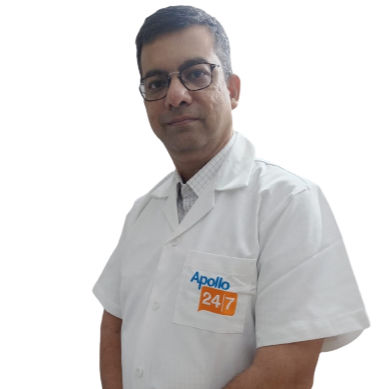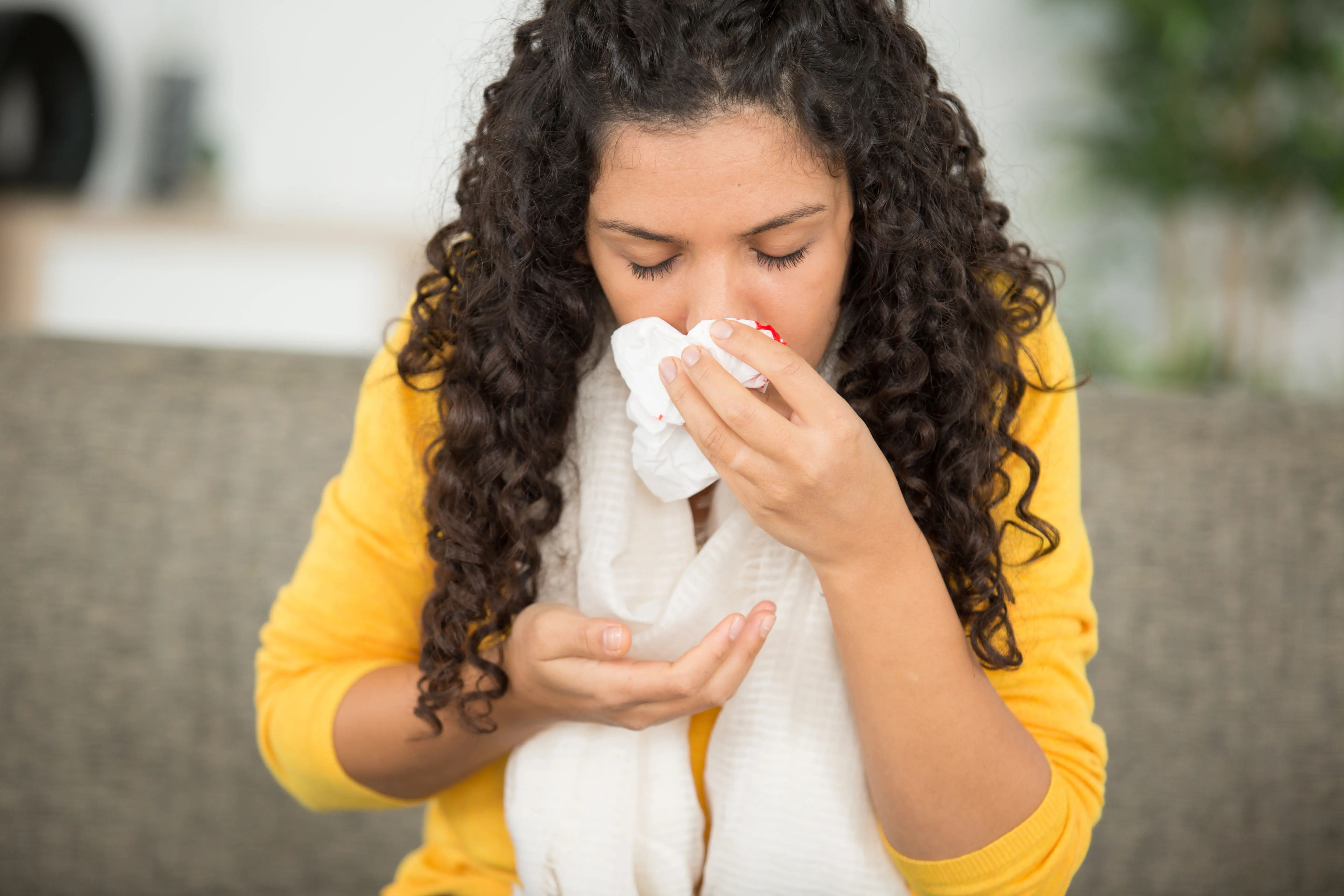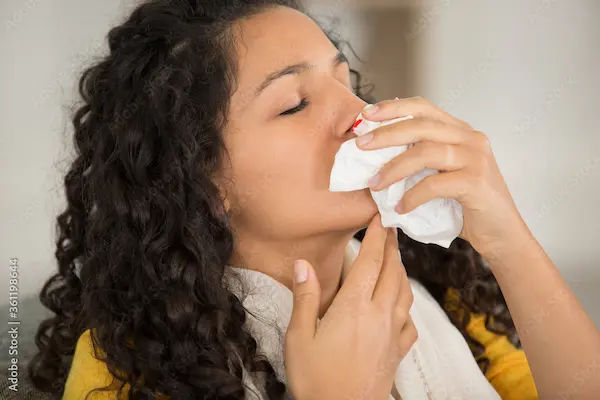Guide to Nose Bleeding First Aid Kit Home Care What To Expect
Discover how to build and use a complete nosebleed first aid kit at home. Learn safe, step-by-step methods to stop nosebleeds quickly, prevent recurrences, and know when to seek medical help.


A nosebleed can be unsettling, but the right first aid kit and calm technique make it easy to manage safely at home. This guide covers how to create a nosebleed-ready kit, stop a bleed fast, prevent recurrences, and understand when to see a doctor.
Why Nosebleeds Happen and How Common They Are
Understanding the common causes helps you act quickly and prevent recurrence.
Most nosebleeds start at the front of the nose, where tiny blood vessels sit close to the surface. Dry air, allergies, 10infections, and minor trauma often trigger bleeding. Less often, deeper bleeds occur, particularly in older adults or those with high blood pressure. Up to 60% of people experience a nosebleed in their lifetime, so preparation is worthwhile.
Key points:
- Anterior vs posterior bleeds: Anterior bleeds are visible and usually manageable; posterior bleeds may flow down the
throat and often need medical help. - Common triggers: Dry air, frequent nose blowing, allergies, aspirin or anticoagulants, and high blood pressure.
- Emergency signs: Bleeding lasting over 20 minutes, heavy flow, dizziness, or after major trauma.
Unique insight: Think of your nose like skin—when it dries and cracks, it bleeds. Keeping it moist is the best protection.
Consult a Top General Practitioner for Personalised Advice
Building a Nosebleed-Ready First Aid Kit
Having the right supplies on hand turns panic into calm control.
Core Essentials
- Nitrile gloves for hygiene
- Absorbent gauze pads and rolled gauze
- Cotton balls or dental rolls
- Nasal tampons or compressed sponges (for anterior bleeds)
- Saline nasal spray and water-based gel
- Cold pack or reusable gel pack
- Oxymetazoline nasal spray (if suitable)
- Flashlight or penlight
- Small waste bags and tissues
- Laminated instruction card with first aid steps
Extras for Children, Older Adults, and Travellers
Include softer cotton rolls for small nostrils, extra saline, and gel for travel or dry climates. Older adults may also benefit
from a home blood pressure cuff.
Storage and Maintenance
Keep all nosebleed items in a clearly labelled red pouch within your main first aid kit. Check expiry dates every three
months.
Unique insight: Use a timer or phone alarm to ensure you apply nose pressure for a full 10 minutes—most people
underestimate this.
Step-by-Step: How to Stop a Nosebleed at Home
Following the correct technique stops most nosebleeds within minutes.
Step 1: Sit Up and Lean Forward
Do not tilt your head back. Lean slightly forward and breathe through your mouth.
Step 2: Pinch the Soft Part of the Nose
Use your thumb and index finger to pinch both nostrils closed (not the bony bridge) for 10 minutes without checking.
Step 3: Optional Support Measures
Apply a short-acting nasal spray before pinching, if appropriate, or add a dab of nasal gel after bleeding stops.
Step 4: If Bleeding Persists
Repeat pressure for another 10 minutes. If it continues after 20 minutes or is heavy, seek urgent medical help.
Avoid: Tilting back, blowing your nose, or stuffing tissues deeply inside.
Unique insight: A quick diagram on your instruction card showing where to pinch can prevent mistakes during stress.
What to Expect During and After a Nosebleed
Knowing what’s normal helps you stay calm.
Most nosebleeds stop within 10–20 minutes. Small amounts of blood can appear dramatic. Mild dizziness or anxiety is
common—sit still and breathe slowly.
Aftercare:
- Avoid hot drinks, strenuous activity, and nose blowing for 24 hours.
- Keep the nose moist with saline spray and gel.
- Resume normal activities once steady and comfortable.
Unique insight: Track nosebleeds in your phone—note date, triggers, and duration. Spotting patterns helps prevent future bleeds.
Prevention: Keeping Nosebleeds from Coming Back
Moisture and gentle habits are key to preventing recurrence.
Humidity and Moisture
Use a cool-mist humidifier and saline sprays regularly. Apply a thin layer of petroleum jelly or saline gel inside the nose
twice daily.
Gentle Care
Avoid nose picking or aggressive cleaning. Trim nails and teach children to do the same.
Manage Allergies and Medications
Use nasal sprays correctly (angled outward), and consult your doctor about any blood thinners if nosebleeds are
frequent.
Unique insight: A nightly saline-and-gel routine can reduce winter nosebleeds dramatically.
Special Situations and Red Flags
Some groups and symptoms need extra attention.
Children
Frequent nosebleeds are common but usually harmless. Keep air humidified and discourage nose picking.
Blood Thinners and High Blood Pressure
Bleeding may last longer; seek care sooner. Never stop prescribed medication without medical advice.
Pregnancy and Older Adults
Hormonal changes or fragile vessels may increase bleeds—gentle care and medical review are advised.
Red Flags:
Bleeding over 20 minutes, recurrent one-sided bleeds, heavy loss, or after trauma—seek emergency help.
When to Seek Medical Help—and What to Expect
Know when home care isn’t enough.
Seek urgent help if bleeding continues after 20 minutes, is heavy, or follows injury. For recurrent bleeds, schedule a
routine check-up.
Clinical Care May Include:
- Identifying the bleeding site
- Cauterisation with silver nitrate
- Nasal packing or balloon devices
- Blood tests if frequent bleeds occur
If needed, Apollo 24|7 offers home collection for blood tests such as CBC or INR.
The “Nosebleed Module”: A Smart Add-On to Your First Aid Kit
A compact, clearly labelled pouch ensures you’re always ready.
Pack items in this order: gloves, gauze, saline spray, gel, decongestant, nasal tampons, cotton rolls, cold pack, and
instruction card. Run a family drill twice a year to practise finding and using it.
Unique insight: Include a mirror and penlight—small tools that make a big difference when positioning pressure
correctly.
Real-World Examples and Data: What Works
Practical success stories highlight how simple prevention reduces nosebleeds.
A family in a dry region cut their child’s nosebleeds by 80% simply by adding nightly saline spray, gel, and a humidifier.
Regular moisture care works—and it’s supported by medical guidance.
Unique insight: Most anterior bleeds stop within 10 minutes of proper pressure—technique matters more than
equipment.
Travel and Outdoor Considerations
Be prepared for dry air and cold conditions.
On flights, use saline spray every few hours and stay hydrated. For outdoor sports, apply nasal gel before heading out
and pack a mini nosebleed kit in your bag.
Unique insight: Keep a small “micro-kit” in your carry-on—perfect for frequent flyers.
First Aid Kit Maintenance: Audits, Expiry, and Training
Regular checks keep your kit ready when you need it.
Review your kit quarterly: replace expired sprays and gels, ensure the flashlight works, and restock used items. Avoid
storing in hot or humid spaces.
Unique insight: Add a phone reminder to audit your kit every three months—small habits save big stress later.
Myths vs Facts: Nosebleed Do’s and Don’ts
Clarifying common misconceptions ensures safer care.
- Myth: Lean back. Fact: Lean forward to avoid swallowing blood.
- Myth: Pinch the bridge. Fact: Pinch the soft part below the bridge.
- Myth: Ice alone stops it. Fact: Pressure is the most effective method.
- Myth: Deeply stuffing tissue helps. Fact: It can injure and worsen bleeding.
Budget and Shopping Guide
You can build a complete nosebleed kit affordably.
Essentials:
Gloves, gauze, saline spray, petroleum jelly or saline gel, and cold packs.
Optional Extras:
Penlight, mirror, nasal tampons, labelled pouch.
Buy from pharmacies, online retailers, or first aid suppliers, and always check expiry dates.
Unique insight: Keep one kit at home and another in the car—you’ll never be caught unprepared.
Conclusion
Nosebleeds are common but usually manageable with the right approach. By preparing a dedicated first aid kit,
practising correct pressure, and keeping your nasal passages moist, you can control most bleeds at home. Remember to note red flags such as prolonged or heavy bleeding and seek help promptly if they occur.
If you experience frequent or severe episodes, consult a doctor online with Apollo 24|7 for expert advice, or book an in-person visit for examination. Apollo 24|7 also offers home collection for relevant tests such as CBC or INR. With good preparation, you can manage nosebleeds calmly, safely, and effectively.
Consult a Top General Practitioner for Personalised Advice
Consult a Top General Practitioner for Personalised Advice

Dr. Suvadeep Sen
Critical Care Specialist
12 Years • MBBS, MD, FNB (CRITICAL CARE MEDICINE), EDIC
Mumbai
Apollo Hospitals CBD Belapur, Mumbai

Dr. Mainak Baksi
General Practitioner
13 Years • MBBS , MD (MPH)
Howrah
Mainak Baksi Clinic, Howrah
(50+ Patients)

Dr Suseela
General Physician
5 Years • MBBS
Bengaluru
Apollo Medical Center, Marathahalli, Bengaluru

Dr. Rajib Ghose
General Physician/ Internal Medicine Specialist
25 Years • MBBS
East Midnapore
VIVEKANANDA SEBA SADAN, East Midnapore

Dr. Arif Ahmed
General Physician/ Internal Medicine Specialist
9 Years • MBBS, MD (Genl. Med.)
Kolkata
MCR SUPER SPECIALITY POLY CLINIC & PATHOLOGY, Kolkata
Consult a Top General Practitioner for Personalised Advice

Dr. Suvadeep Sen
Critical Care Specialist
12 Years • MBBS, MD, FNB (CRITICAL CARE MEDICINE), EDIC
Mumbai
Apollo Hospitals CBD Belapur, Mumbai

Dr. Mainak Baksi
General Practitioner
13 Years • MBBS , MD (MPH)
Howrah
Mainak Baksi Clinic, Howrah
(50+ Patients)

Dr Suseela
General Physician
5 Years • MBBS
Bengaluru
Apollo Medical Center, Marathahalli, Bengaluru

Dr. Rajib Ghose
General Physician/ Internal Medicine Specialist
25 Years • MBBS
East Midnapore
VIVEKANANDA SEBA SADAN, East Midnapore

Dr. Arif Ahmed
General Physician/ Internal Medicine Specialist
9 Years • MBBS, MD (Genl. Med.)
Kolkata
MCR SUPER SPECIALITY POLY CLINIC & PATHOLOGY, Kolkata




